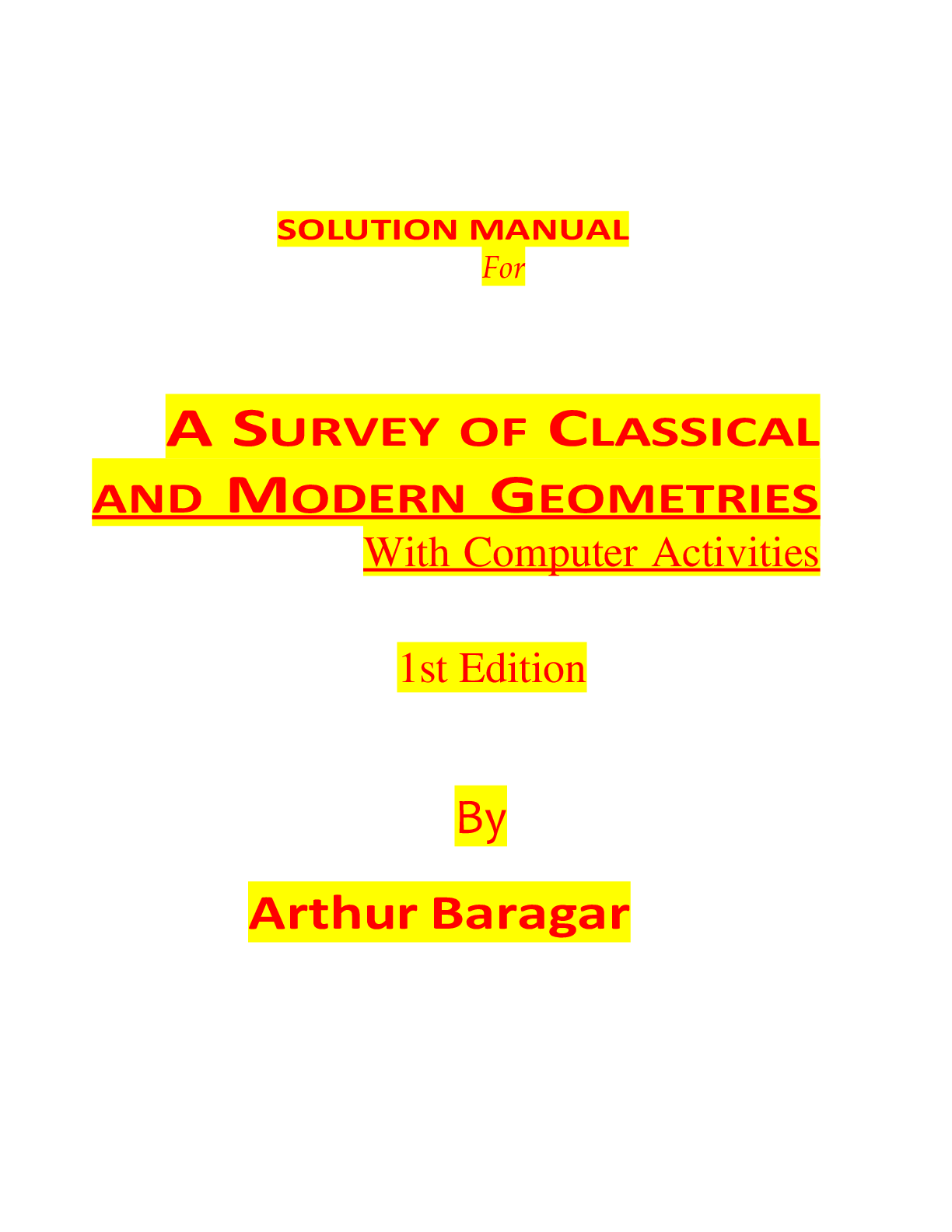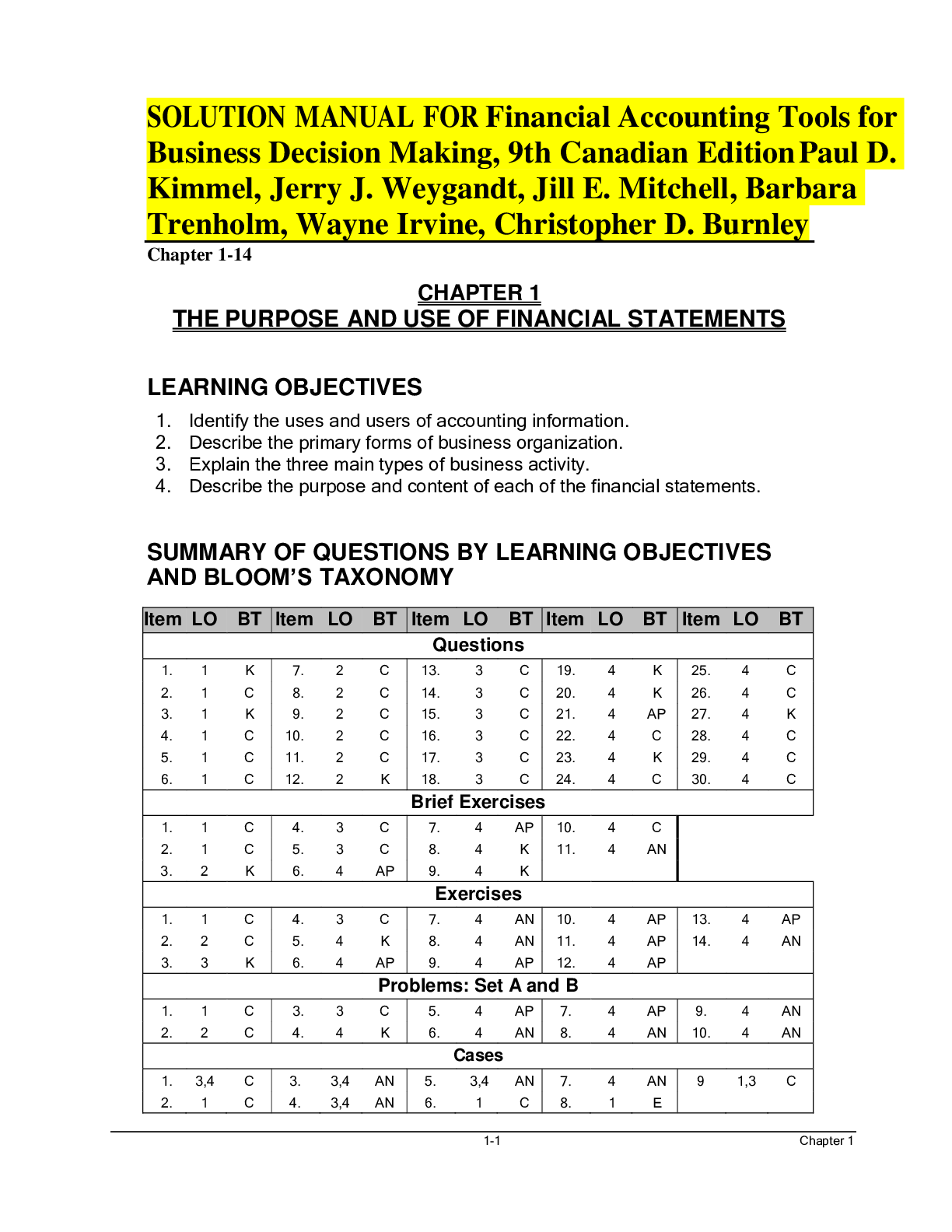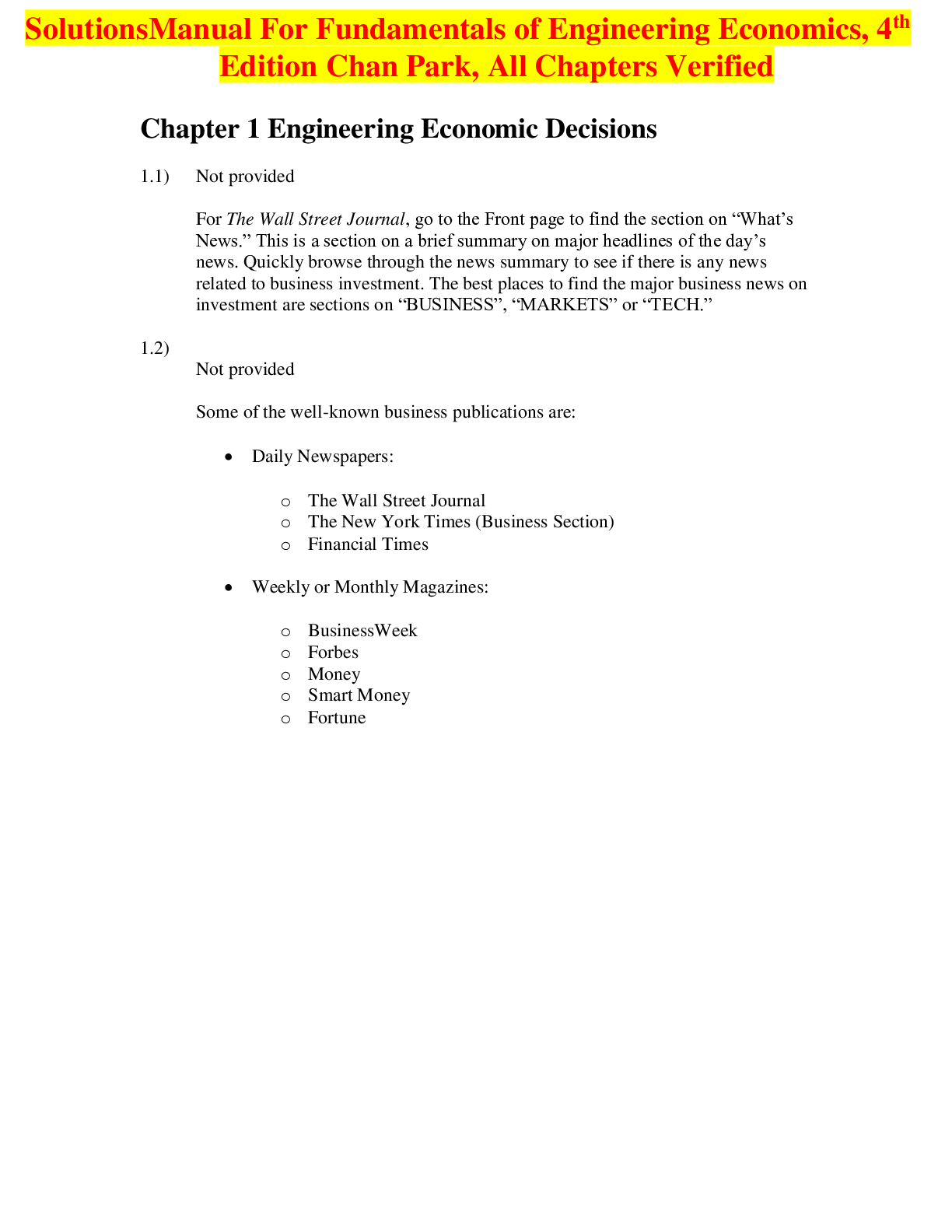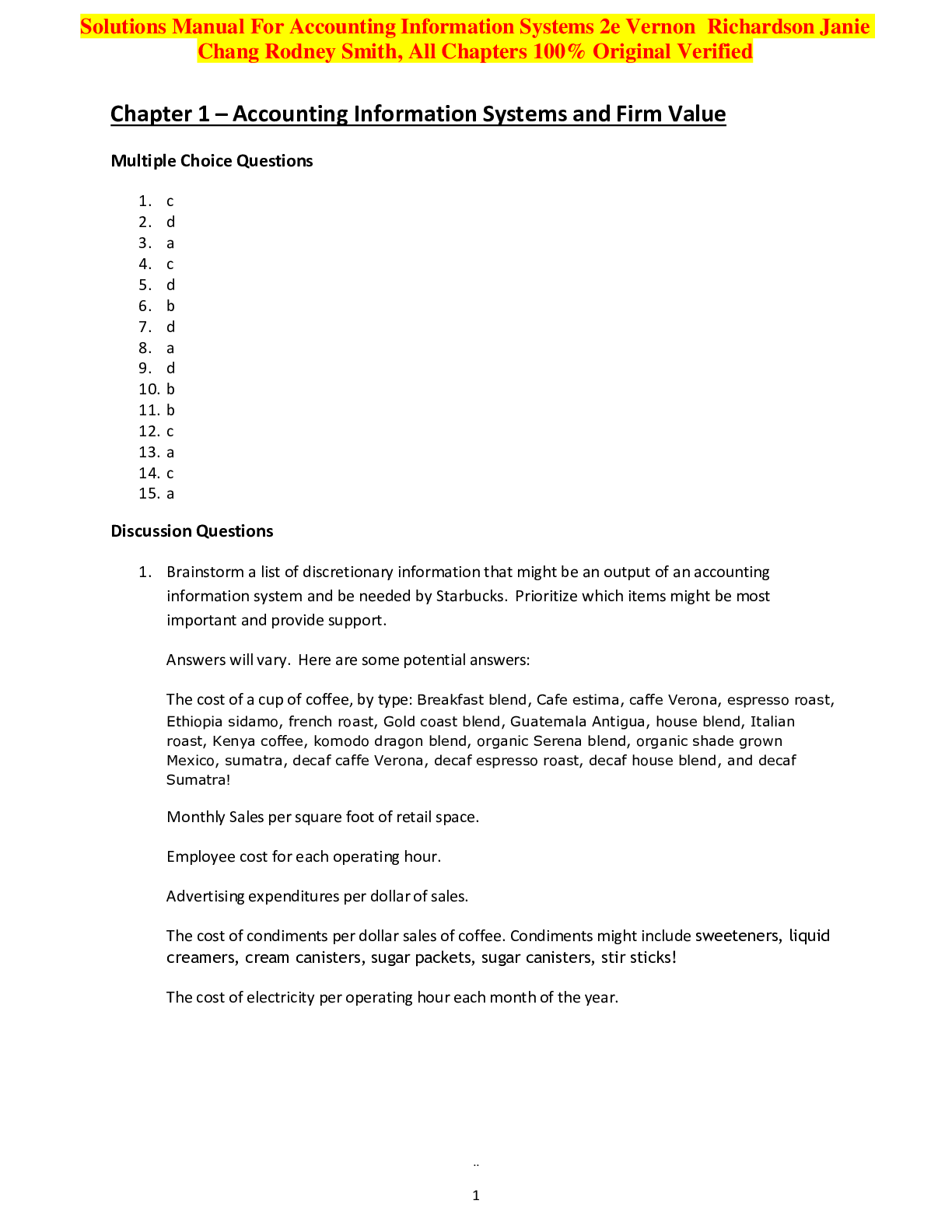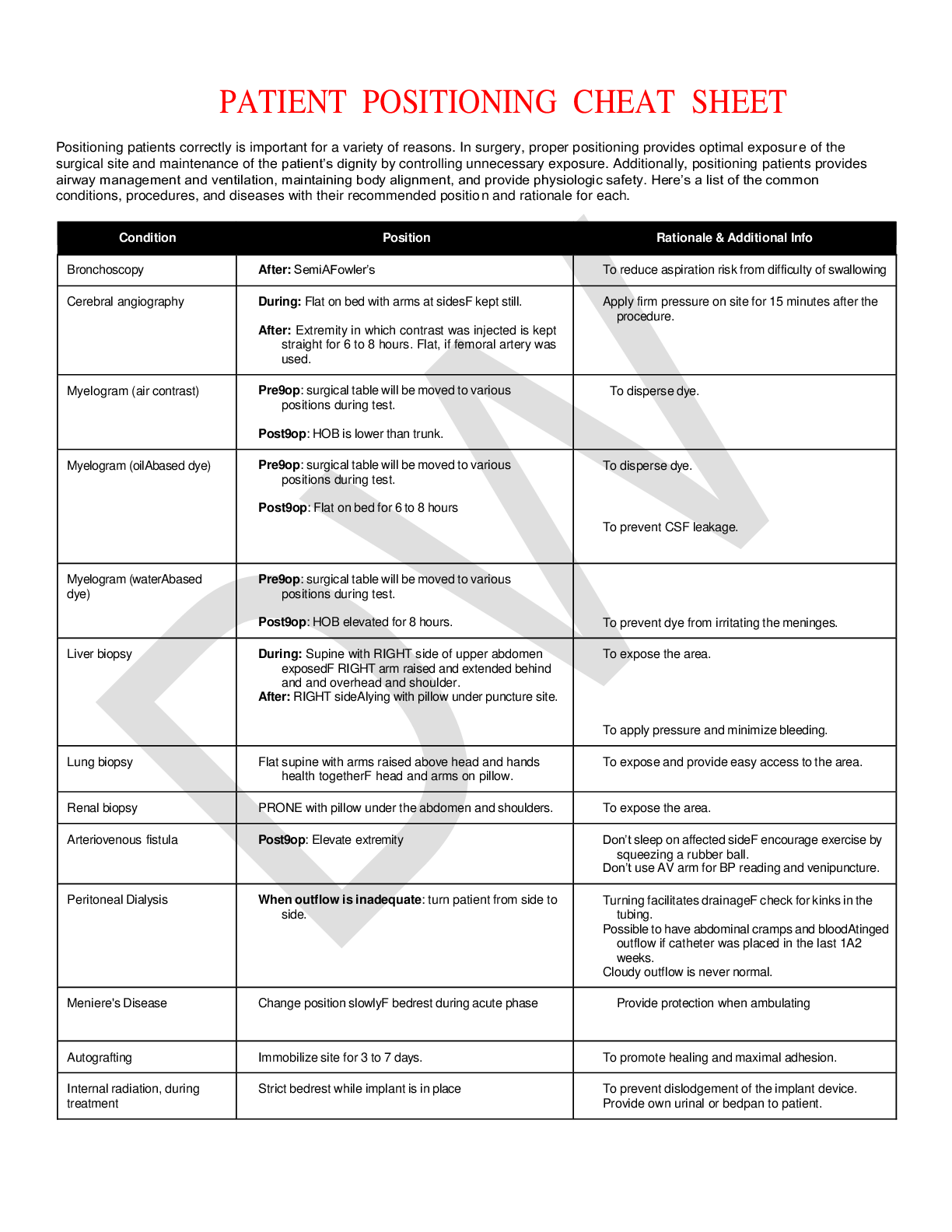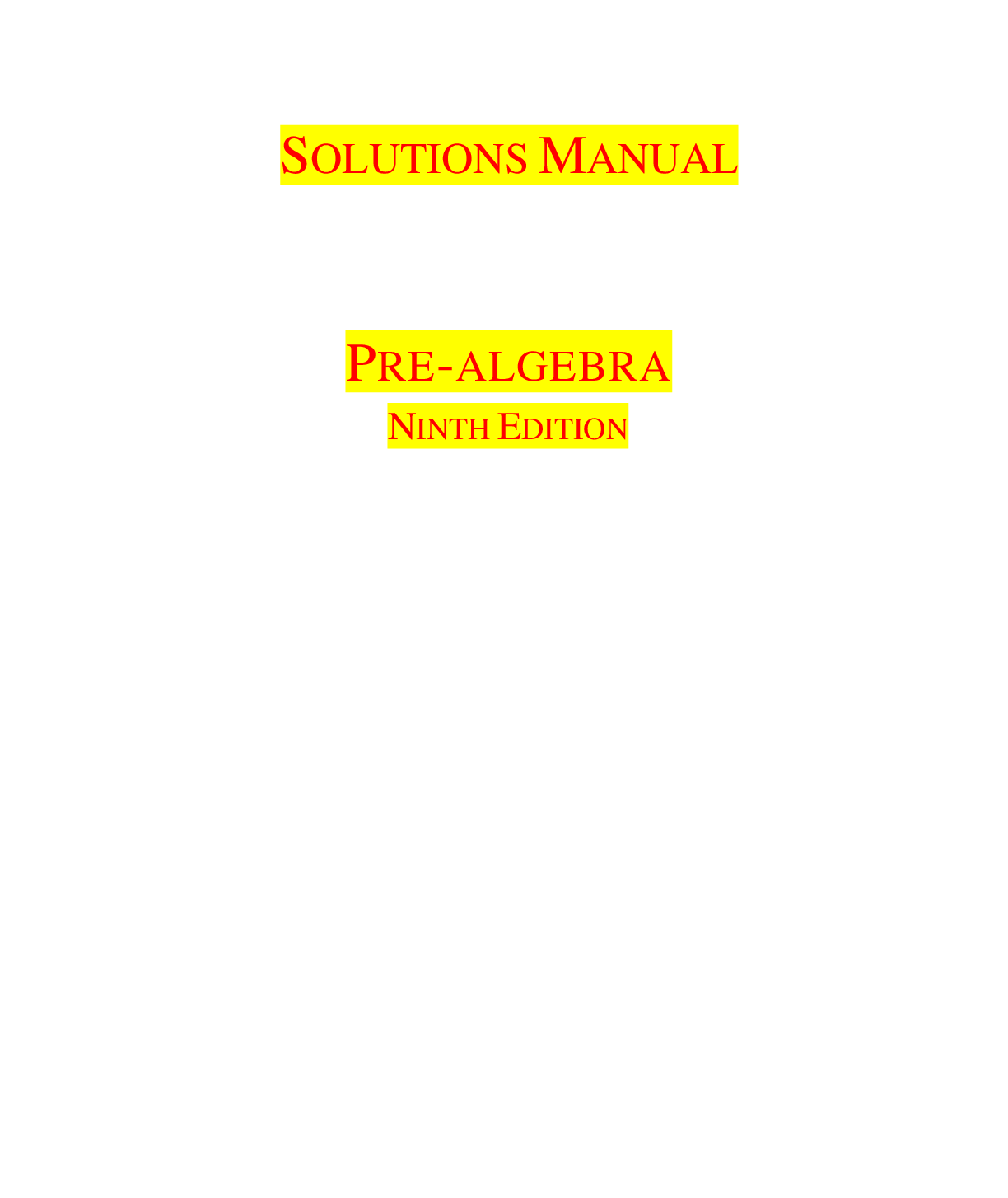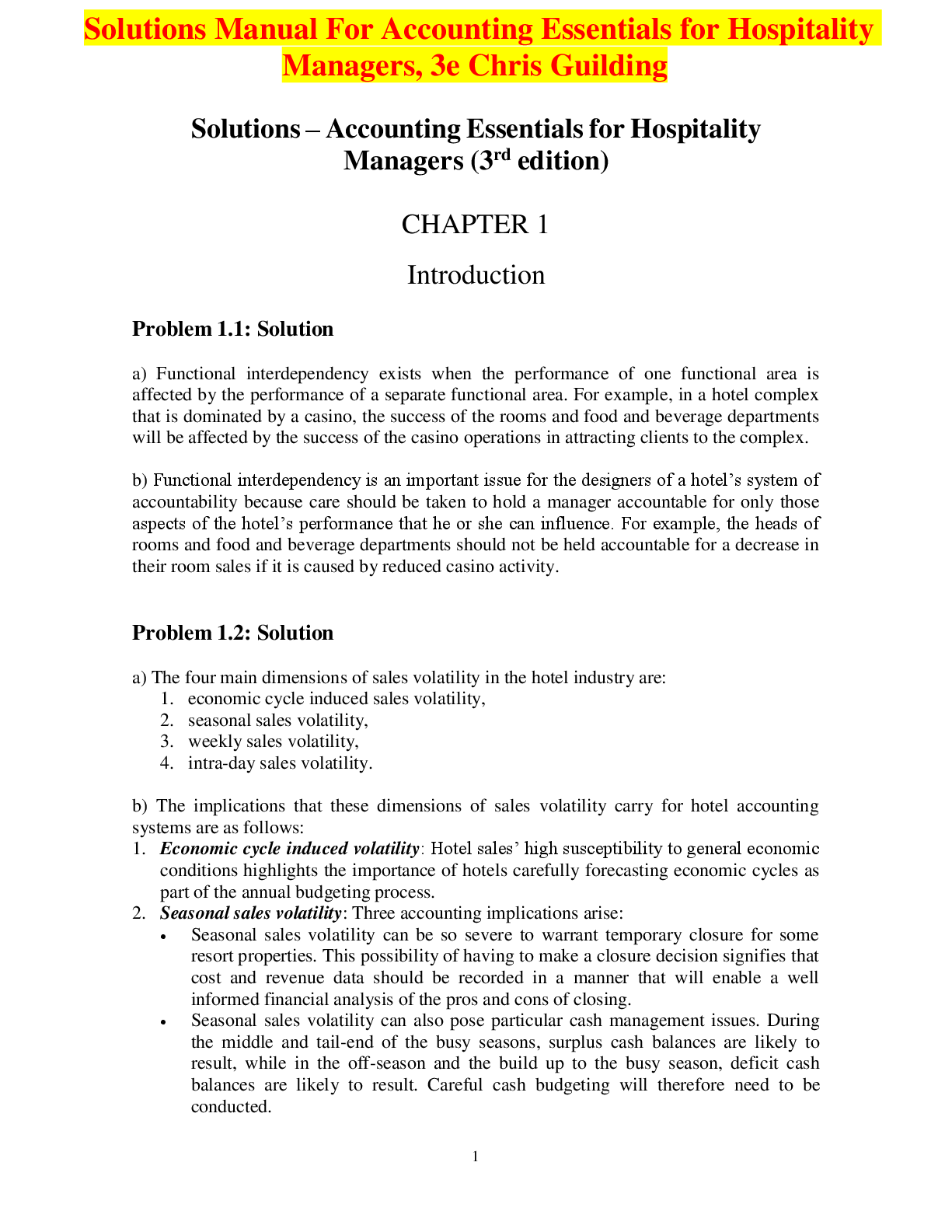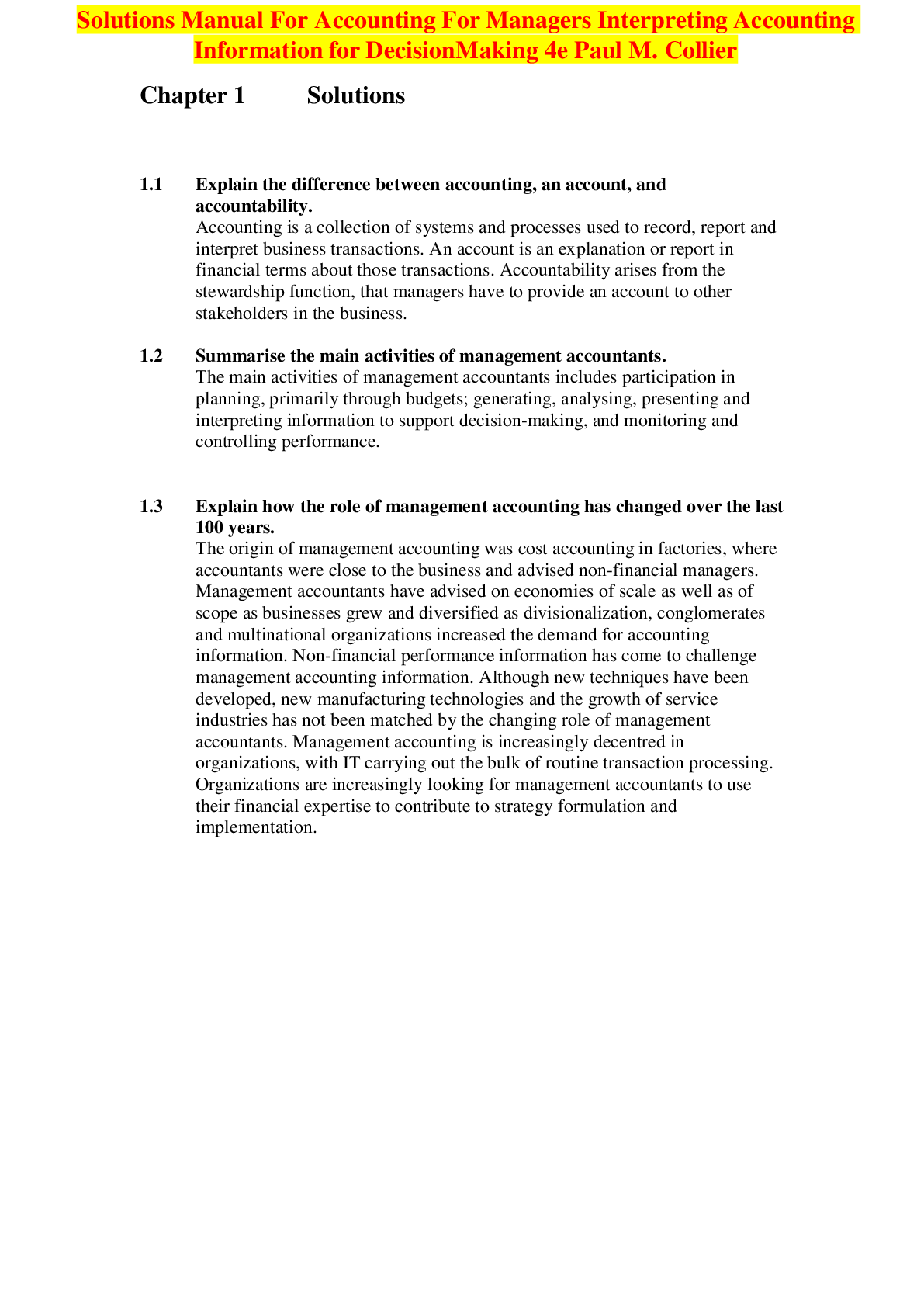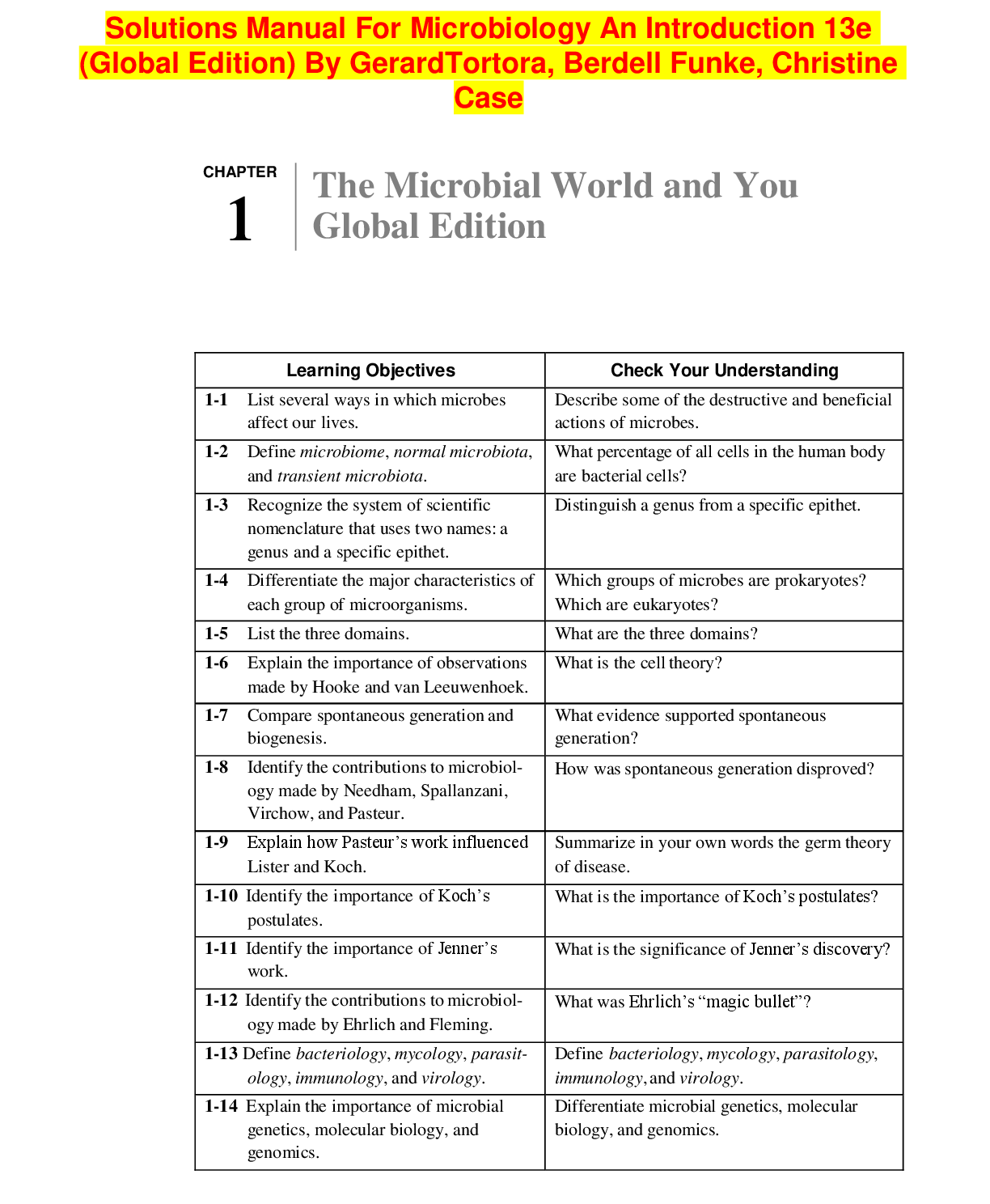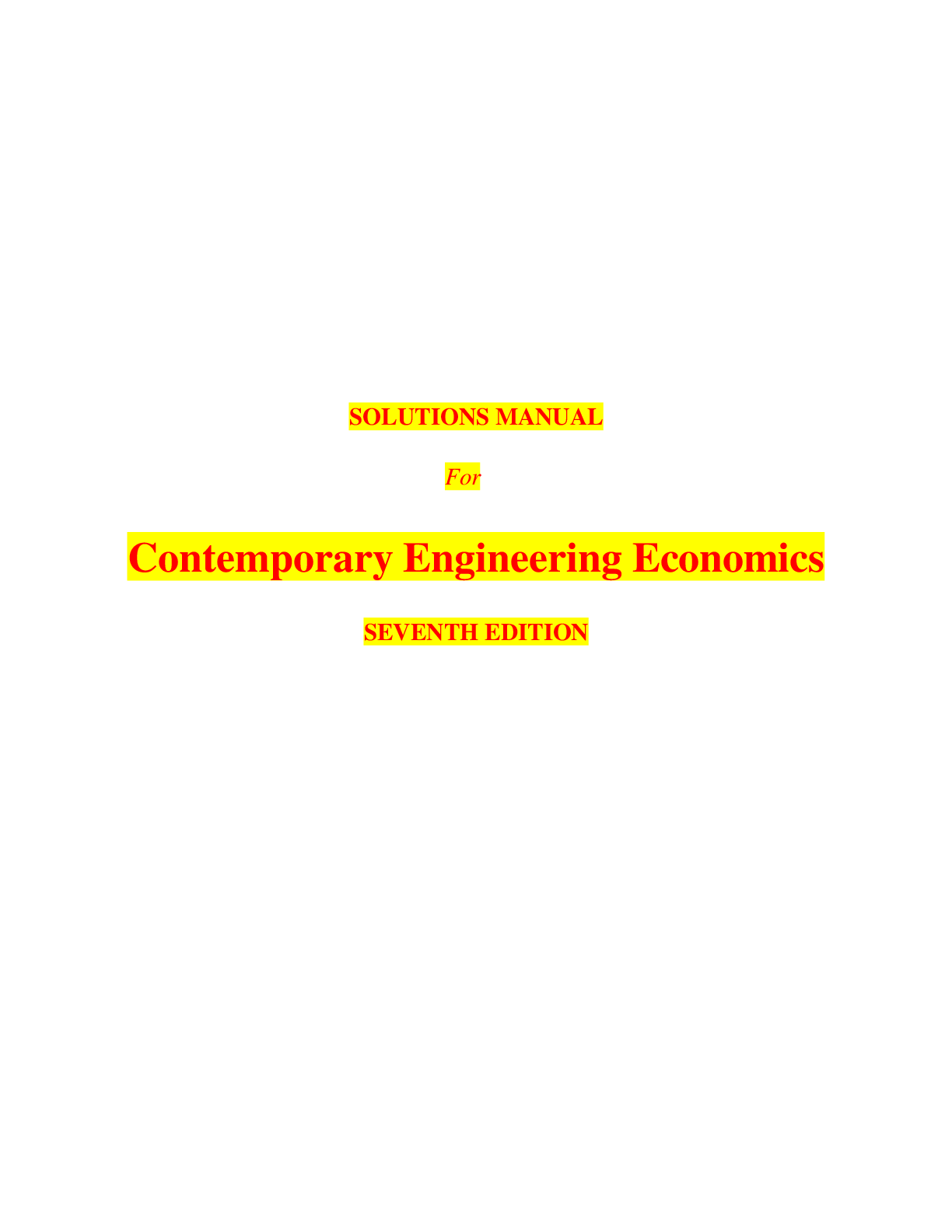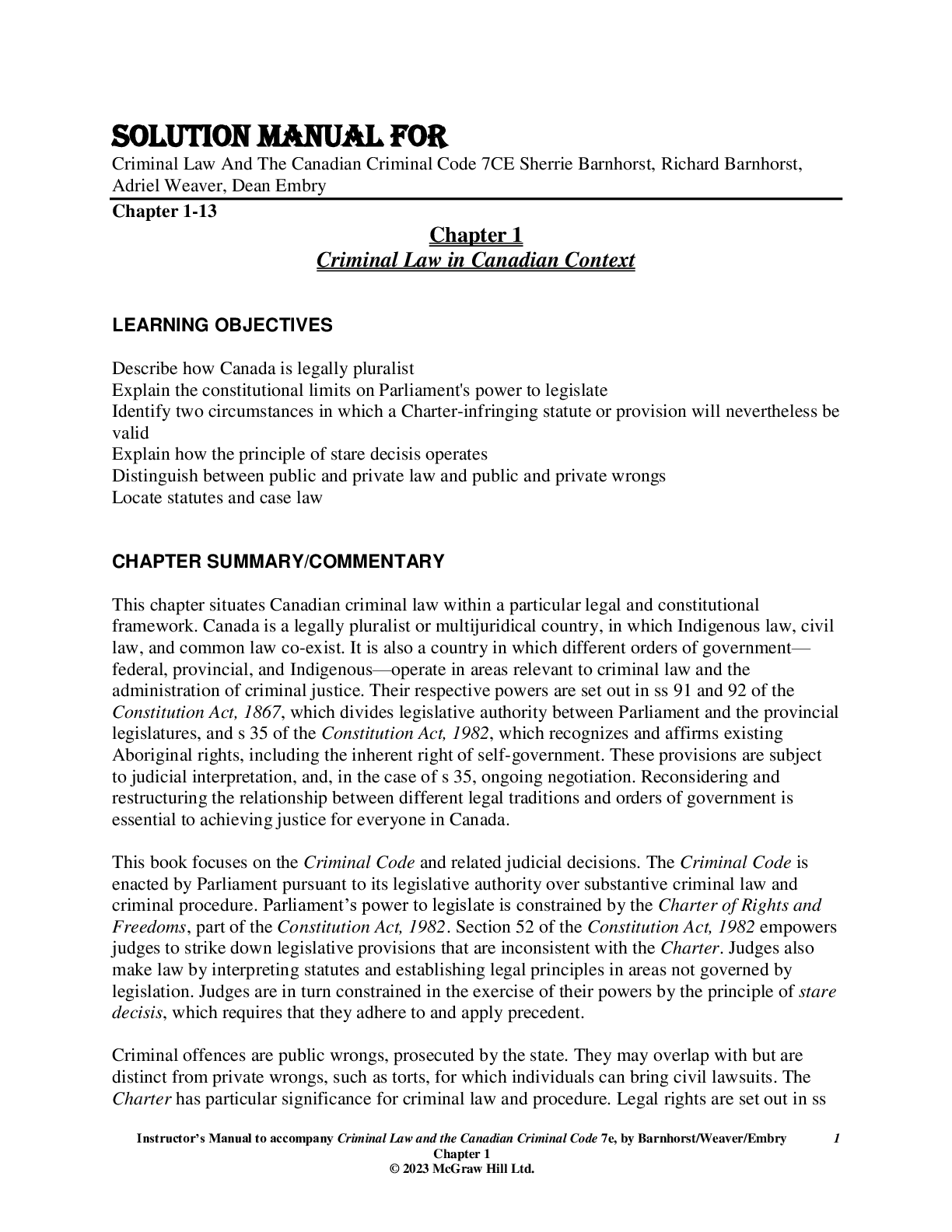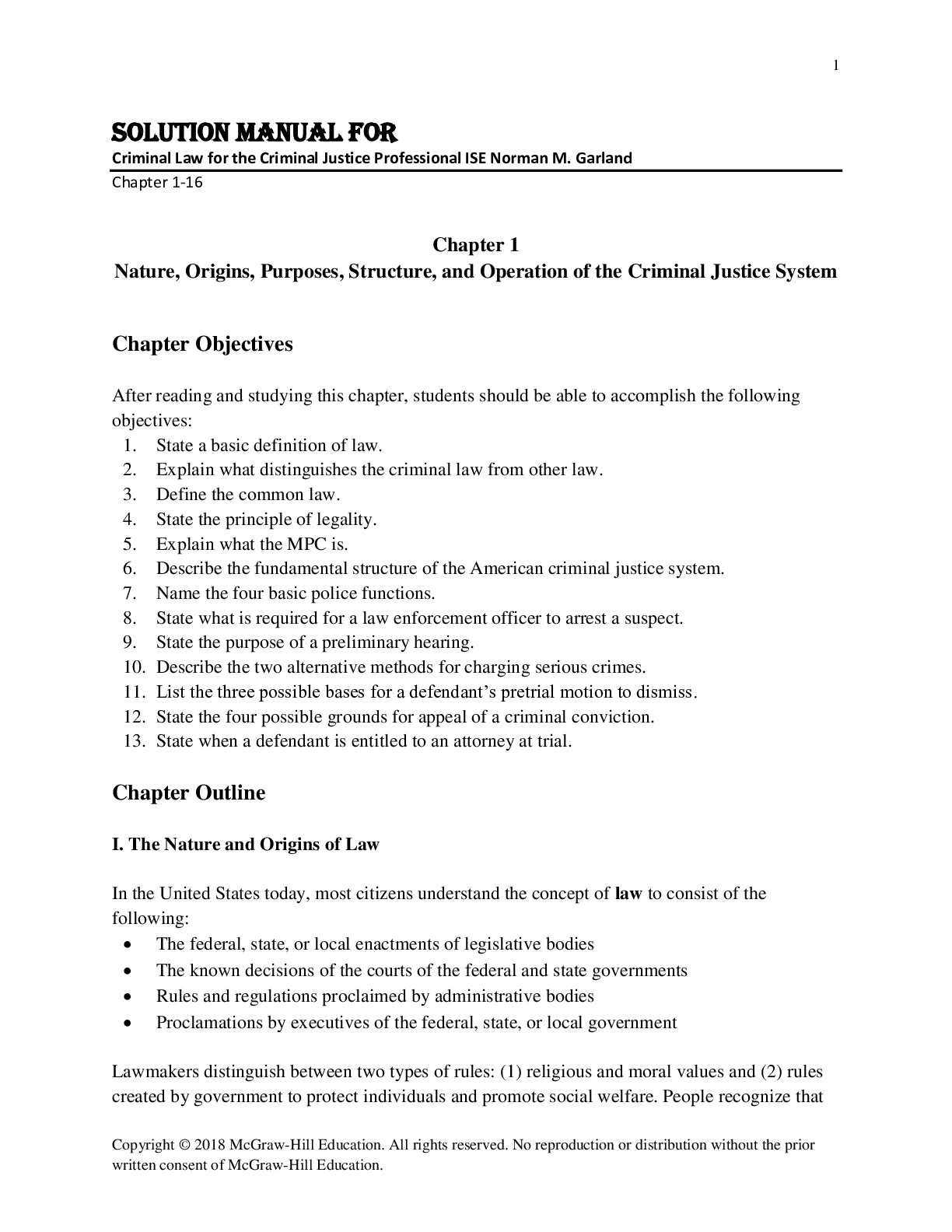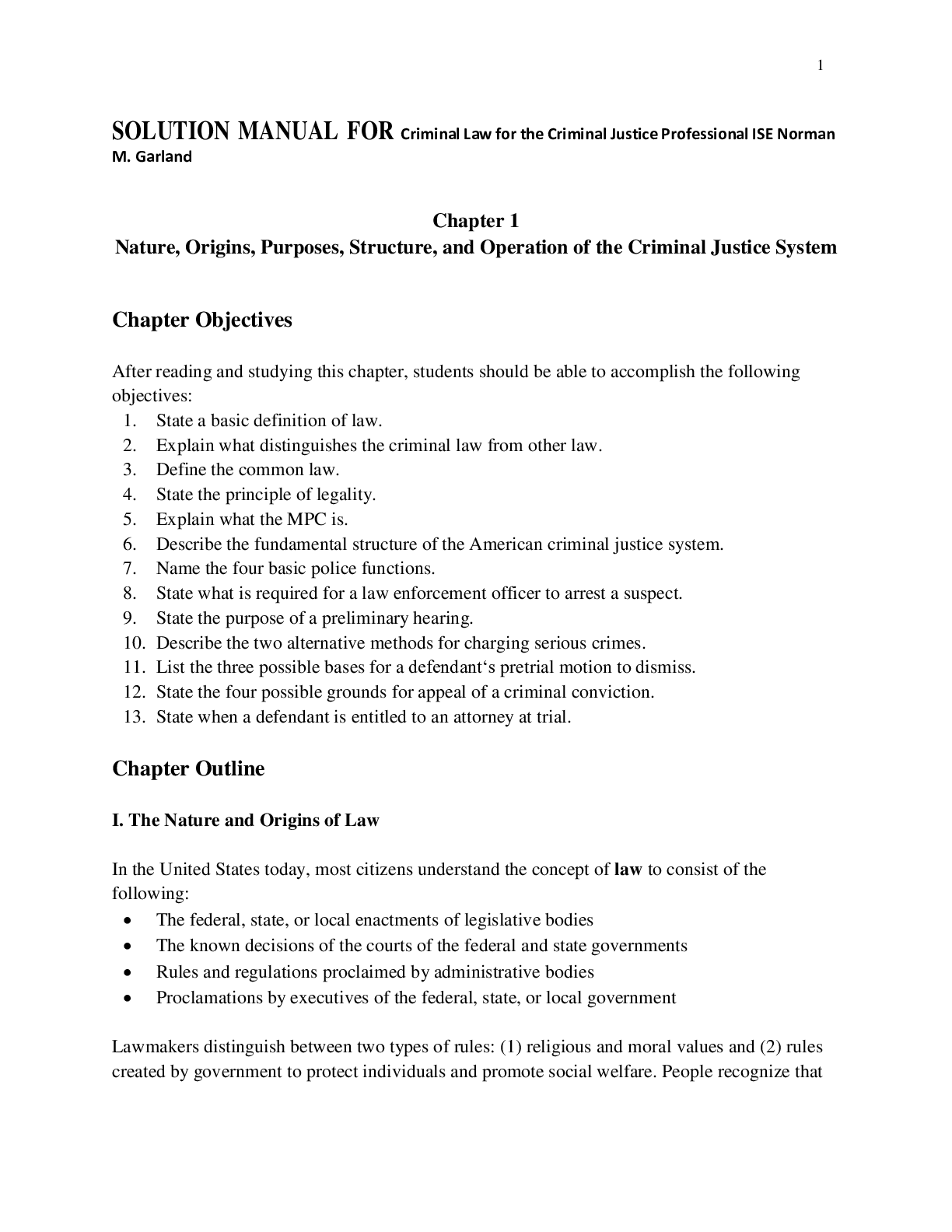Criminology > SOLUTIONS MANUAL > Solution Manual for Criminal Law for the Criminal Justice Professional ISE Norman M. Garland (All)
Solution Manual for Criminal Law for the Criminal Justice Professional ISE Norman M. Garland
Document Content and Description Below
Solution Manual for Criminal Law for the Criminal Justice Professional ISE Norman M. Garland-In the United States today, most citizens understand the concept of law to consist of the following: ... The federal, state, or local enactments of legislative bodies The known decisions of the courts of the federal and state governments Rules and regulations proclaimed by administrative bodies Proclamations by executives of the federal, state, or local government Lawmakers distinguish between two types of rules: (1) religious and moral values and (2) rules created by government to protect individuals and promote social welfare. People recognize that 2 some actions may be immoral even though they are not illegal. In addition, people generally believe that they should be able to live according to their religious principles, as long as their actions do not violate the law. A. Emergence of Written Law From time immemorial, humankind has sought to minimize turmoil and chaos by the imposition of some set of rules by which to live. From the edicts of kings and conquerors to the U.S. Constitution, rules of conduct for society have been proclaimed and enforced. Ancient Law: Although human societies have always had rules of conduct, the first known written laws are believed to be those found on clay tablets in Ur, one of the citystates of Sumeria. They were created about 5,000 years ago. English and American Common Law: Every ancient nation eventually developed formal legal codes, and the American legal code derives primarily from that of England. After William of Normandy conquered England in 1066, he established the eyre—that is, a court with judges who traveled throughout the kingdom once every seven years to hear cases as representatives of the king. The decisions of these judges and of other members of the central judiciary created by the Normans to administer the law formed a large part of England‘s common law. Emergence of Modern Criminal Law: When the 13 colonies were established in America, they adopted England‘s common law. As the colonies developed and the United States was formed, the law of the United States developed separately from the English common law tradition. Eventually, statutory law replaced common law to meet citizens‘ needs. B. Civil Law versus Criminal Law Today, the U.S. judicial system provides for criminal law violations, also called crimes, and civil law violations, also called torts. Criminal law is different from other types of law, and from civil law in particular, because it involves a violation of public rights and duties, which create a social harm. Civil law deals with matters that are considered to be private concerns between individuals. It includes laws dealing with personal injury, contracts, and property, as well as administrative law. A violation of civil law is called a tort. II. Criminal Law in the United States The American and French revolutions stimulated a legislative movement in the area of criminal 3 law. Of special concern was the severity of the criminal law: By 1800, more than 100 different kinds of offenses were punishable by death under English law. A. Purpose of the Criminal Law The underlying purpose of the criminal law is to prevent and control crime. Substantive criminal law consists of those laws, mostly statutory, that define what constitutes criminal conduct subject to prosecution by the state and set forth the punishment for such criminal acts. Procedural criminal law dictates the methods and the means by which the state proceeds, through the police, public administrators, and the courts, to enforce rights or duties of the substantive law. A crime has been committed when the following elements are present: A willful unlawful act, the actus reus. A guilty mind, the mens rea. The guilty mind element does not require intent to violate the law, but rather the intent to commit the act that the law prohibits. A concurrence of act and intent. The occurrence of harm to a person, property, or society. A causal relationship between the criminal act and the harm. B. Statutory Criminal Law The development of the common law of crimes that began in eleventh-century England continues to a smaller degree today, because some nonstatutory crimes are still recognized in some jurisdictions. Otherwise, the criminal law develops and is redefined by legislative enactment, often in response to societal pressures. C. The Principle of Legality Another reason for the decline of judicially created criminal law definitions is the principle of legality, which is a core concept of the American system of criminal justice. Under this principle, no one can be punished for an act that was not defined as criminal before the person did the act. D. Contemporary Applications of Common Law Many states have abolished common law crimes, relying exclusively on statutory or code definitions. Even though the common law is but an antecedent to today‘s modern statutory criminal law in most jurisdictions, the common law definitions of crimes continue to play a role in understanding the criminal law. [Show More]
Last updated: 2 months ago
Preview 5 out of 137 pages

Loading document previews ...
Buy this document to get the full access instantly
Instant Download Access after purchase
Buy NowInstant download
We Accept:

Reviews( 0 )
$13.50
Can't find what you want? Try our AI powered Search
Document information
Connected school, study & course
About the document
Uploaded On
Apr 09, 2025
Number of pages
137
Written in
Additional information
This document has been written for:
Uploaded
Apr 09, 2025
Downloads
0
Views
12

